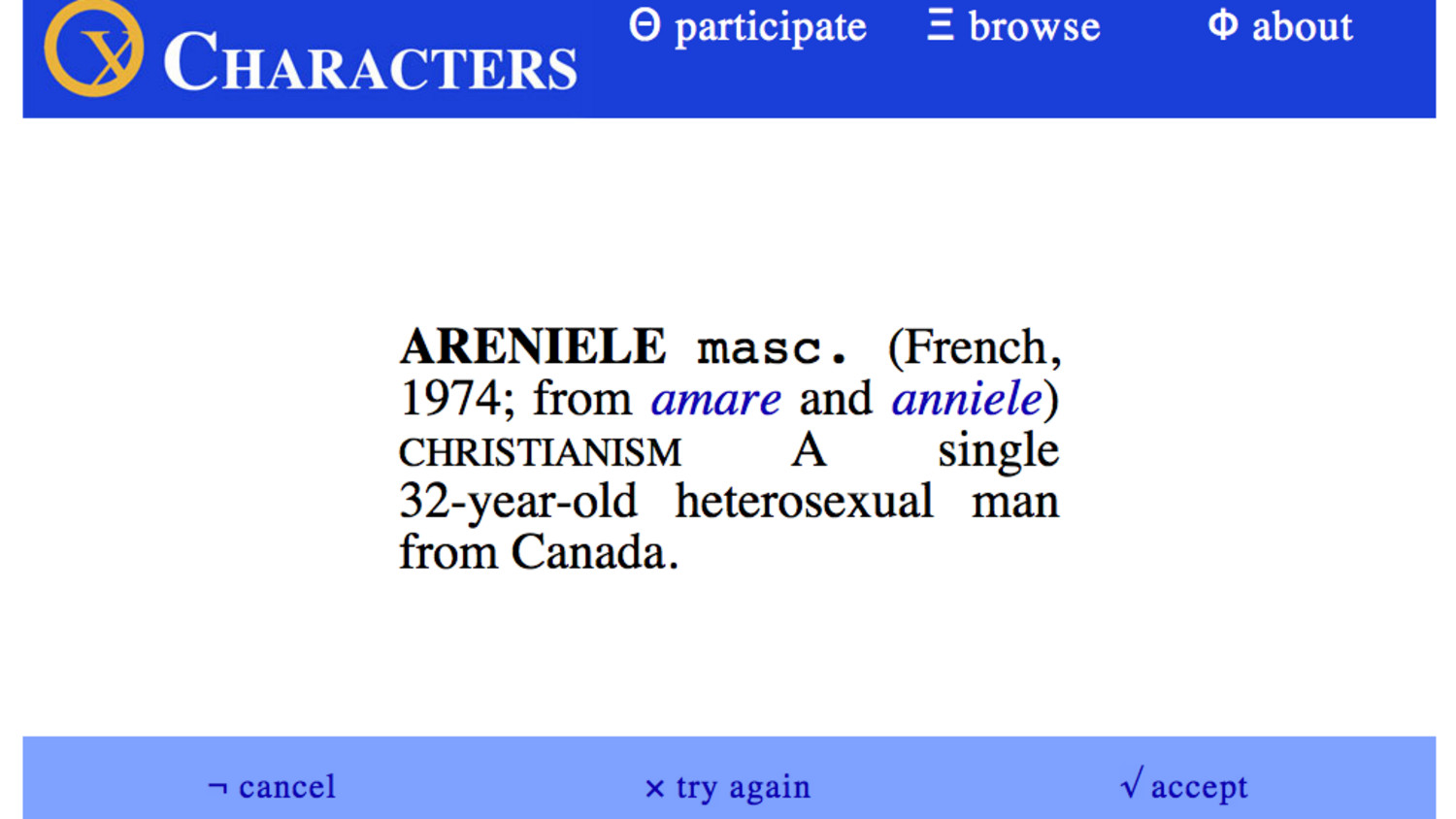
The entire piece is based on a model of the social identity process where the name acts as some kind of genetic signature. When a visitor wants to add his name to the dictionary, the system asks him to fill out a form about his identity. The form compels the visitor to choose among a limited set of categories and traits, shaping his identity into a socially acceptable, standardized format. Getting back to the evolutionary analogy, if the name acts as the genetic code of the visitor, the traits that form his social definition would be his phenotype.
By using artificial recombinations, mutations and crossovers through an evolutionary algorithm, the visitor can then create offspring of his own name or others’: these offsprings’ identity traits are recombined and mutated versions of their parents.
Interactive Scenario
The visitor enters the web site. On the entry page, a short description of the work is given. The visitor has different choices:
These three categories of action represent the three different modalities of interactivity that are proposed by the work. The visitor can switch from one to another in a single click, at any time during his visit.
An expert mode is also offered to the advanced visitor to control the evolution of identities, thus enabling a second level of interactivity that enables a better comprehension and finer tuning of the evolutionary algorithm.